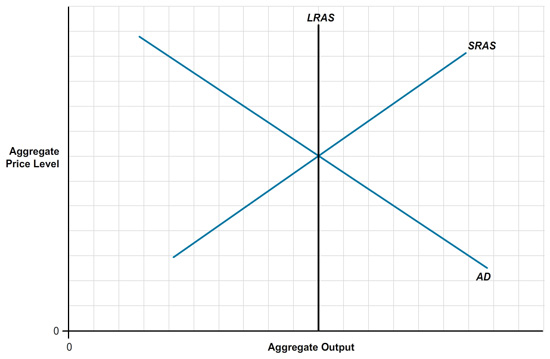Question 1 of 7
Step 1
Consider the following graph. The aggregate demand (AD) curve, short-run aggregate supply (SRAS) curve, and long-run aggregate supply (LRAS) curve are given in this graph.

Here, aggregate output is its full-employment level.
Step 2
If the government decides to raise its level of spending, this is considered a(n) .
Step 3
When government increases expenditures, aggregate demand will .
Step 4
As a result of increased government expenditures, aggregate price level will and aggregate output will .
Step 5

Because the government stimulus pushes up prices, short-run aggregate supply will in the long run.
Step 6
As a result of the SRAS curve shifting left, CPI will and aggregate output will .
Step 7
The ultimate result of this increased government spending is that: CPI is the original price level, CPI is the short-run price level immediately following the stimulus, aggregate output is the original output level, and aggregate output is the short-run output level immediately following the stimulus.